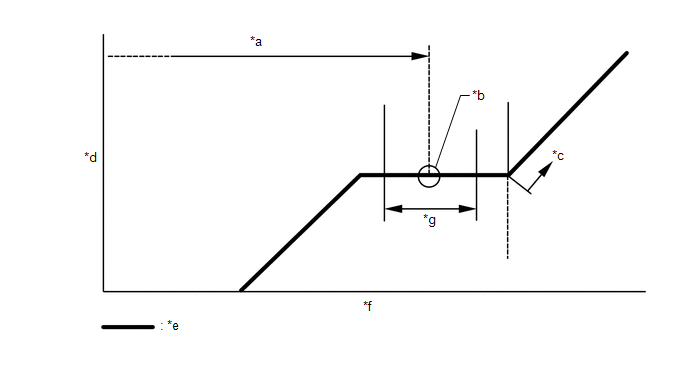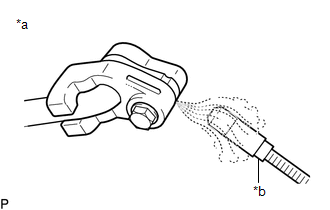| Last Modified: 01-30-2024 | 6.11:8.1.0 | Doc ID: RM100000001FANJ |
| Model Year Start: 2019 | Model: RAV4 | Prod Date Range: [11/2018 - 02/2019] |
| Title: HEATING / AIR CONDITIONING: REFRIGERANT (for HFO-1234yf(R1234yf)): REPLACEMENT; 2019 MY RAV4 RAV4 HV [11/2018 - 02/2019] | ||
REPLACEMENT
PROCEDURE
1. RECOVER REFRIGERANT FROM REFRIGERATION SYSTEM
(a) Start the engine.
(b) Operate the compressor under the following conditions:
|
Item |
Condition |
|---|---|
|
Operating time |
3 minutes or more |
|
Temperature setting |
Max cold |
|
Blower speed |
High |
|
Engine |
Idling |
|
A/C switch |
On |
This causes most of the compressor oil from the various components of the A/C system to collect in the compressor.
HINT:
It is not necessary to operate the compressor if the A/C does not operate because of compressor lock, etc.
(c) Stop the engine.
(d) Recover the refrigerant from the A/C system using a refrigerant recovery unit.
HINT:
Use the refrigerant recovery unit in accordance with the manufacturer's instruction manual.
2. CHARGE AIR CONDITIONING SYSTEM WITH REFRIGERANT
HINT:
Charge the system with refrigerant in accordance with the manufacturer's instruction manual.
(a) Perform vacuum purging using a vacuum pump or appropriate equipment.
NOTICE:
Be sure to use a refrigerant recovery unit that is compatible with HFO-1234yf (R1234yf) systems.
(b) Charge the air conditioning system with refrigerant.
Refrigerant Type:
HFO-1234yf (R1234yf)

|
*a |
Standard Charge Amount |
*b |
Mean Value in Proper Range |
|
*c |
Overcharged |
*d |
High Pressure |
|
*e |
Sub-cool System |
*f |
Refrigerant Amount |
|
*g |
+/-30 g (+/-1.05 oz) |
- |
- |
Standard Charge Amount:
520 to 580 g (18.4 to 20.4 oz)
NOTICE:
- Do not turn the A/C switch on before charging the air conditioning system with refrigerant. Doing so may cause the compressor to operate without refrigerant, resulting in overheating of the compressor.
- The refrigerant amount should be checked by quantity (weight).
- The graph above is shown for reference only.
HINT:
Ensure that sufficient refrigerant is available to recharge the system when using a refrigerant recovery unit. Refrigerant recovery units are not always able to recover 100% of the refrigerant from an air conditioning system.
3. WARM UP ENGINE
(a) Warm up the compressor under the following conditions.
NOTICE:
To prevent damage to the compressor, be sure to warm up the compressor when turning the air conditioning on after removing and installing any air conditioning system lines (including the compressor).
|
Item |
Condition |
|---|---|
|
Operating time |
1 minute or more |
|
Temperature setting |
Max cold |
|
Blower speed |
High |
|
Engine speed |
2000 rpm or less |
|
A/C switch |
On |
4. INSPECT FOR REFRIGERANT LEAK
(a) After recharging the air conditioning system with refrigerant, inspect for refrigerant leaks using a gas leak detector.
HINT:
Be sure to use a gas leak detector that is compatible with HFO-1234yf (R1234yf) systems.
(b) Carry out the test under the following conditions:
- Turn the ignition switch off.
- Ensure good ventilation (the gas leak detector may react to volatile gases which are not refrigerant, such as gasoline vapor and exhaust gas).
- Repeat the inspection 2 or 3 times.
-
Measure the pressure to make sure that there is some refrigerant remaining in the air conditioning system.
Pressure when the compressor is off: approximately 392 to 588 kPa (3.9 to 5.9 kgf/cm2, 57 to 85 psi)
|
(c) Using a gas leak detector, inspect for refrigerant leaks from the air conditioning system. |
|
|
(d) Bring the gas leak detector close to the drain cooler hose with the detector power off, and then turn the detector on. HINT:
|
|
(e) If a refrigerant leak is not detected from the drain cooler hose, remove the blower motor from the cooling unit. Insert the gas leak detector sensor into the unit and check for leaks.
(f) Disconnect the pressure sensor connector and leave it for approximately 20 minutes. Bring the gas leak detector close to the pressure sensor and check for leaks.
HINT:
When checking for leaks, the presence of oily dirt at a joint can indicate a leak.
|
|
|

